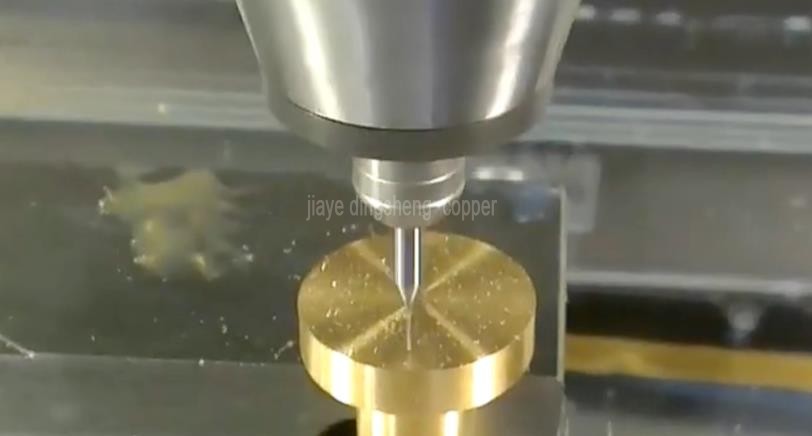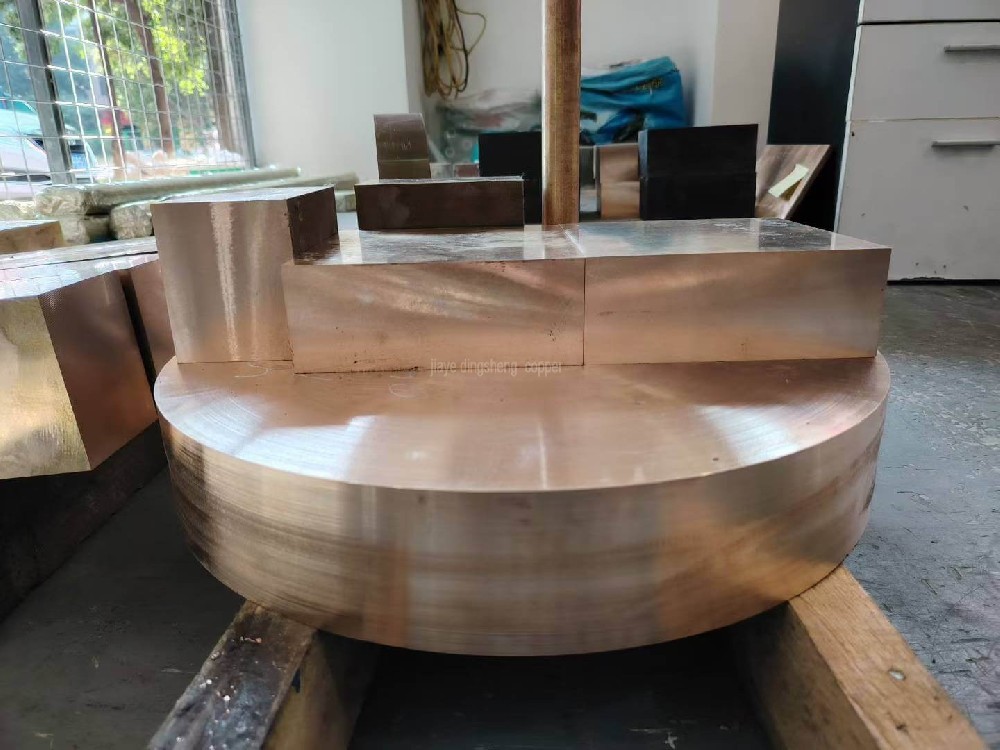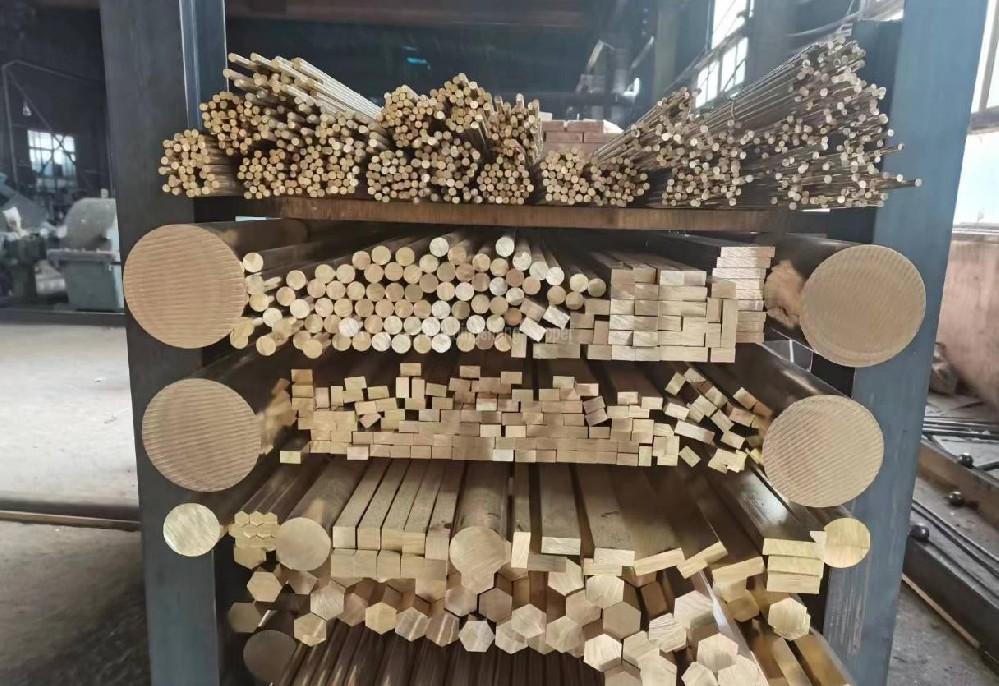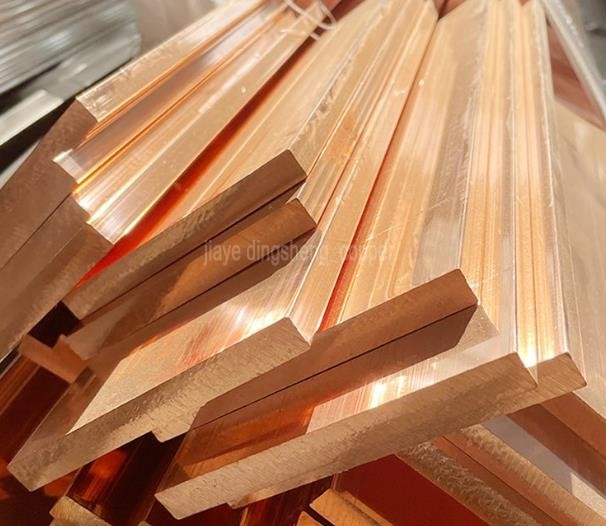How is the surface and size optimization of the beryllium copper rod carried out?
The surface and size optimization of beryllium copper rods is a key step in improving product quality and meeting downstream processing requirements, directly affecting their assembly accuracy, appearance performance, and usage reliability. The optimization process needs to be combined with production process characteristics. Surface treatment technologies are used to improve appearance and corrosion resistance, while precise machining and straightening are employed to control size accuracy. The specific methods are as follows:
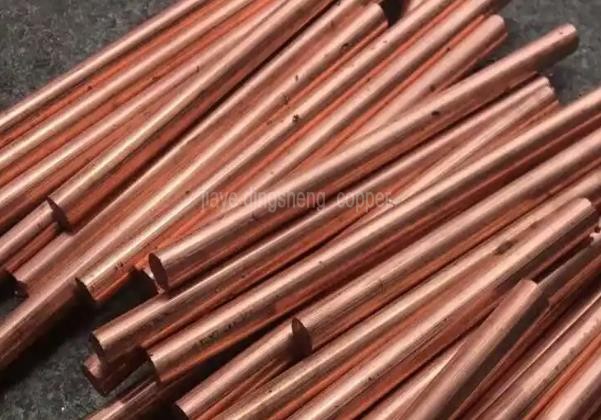
1. Surface Optimization: Enhance smoothness, corrosion resistance, and aesthetics
The surface quality of beryllium copper rods (such as roughness, oxidation state, and defects) directly affects the results of subsequent electroplating, coating, or direct use. Common optimization methods include:
1. Surface Cleaning and Defect Removal
Acid washing:
Objective: Remove the oxide layer (oxide copper, oxide zinc) and oil, impurities formed on the surface after hot processing (hot rolling, hot extrusion), laying the foundation for subsequent processing.
Process: Immerse the beryllium copper rod in a dilute sulfuric acid (5%-10% concentration) or nitric acid (3%-5%) solution at room temperature for 5-15 minutes (adjust according to the thickness of the oxide layer), dissolve the oxide layer through chemical reactions, then rinse with clean water and neutralize (such as sodium carbonate solution) to avoid corrosion of the surface by residual acid.
Application scenarios: Rods after hot processing, or products with slight oxidation on the surface after storage.
Grinding and Polishing:
Mechanical grinding: Use sand wheels, sandpapers (80-400 mesh), or steel wire wheels to remove surface scratches, pits, etc. Defects. Suitable for rough surfaces of rods (such as rough rods after hot rolling), the roughness can be reduced from Ra12.5μm to Ra3.2μm.
Precision Polishing:
Wool wheel polishing: Use a cloth wheel or cotton wheel combined with polishing paste (chromium oxide, iron oxide) to rotate at high speed for polishing, achieving a mirror-like effect (Ra≤0.2μm), suitable for decorative beryllium copper rods (such as furniture hardware, accessory decorations).
Electrolytic Polishing: Place the beryllium copper rod as the anode in an electrolytic cell (electrolyte is a mixture of phosphoric acid and sulfuric acid), using a direct current (10-20V) to dissolve the microscopic protrusions on the surface, obtaining a uniform and bright surface, and removing surface stress, suitable for high-precision electronic parts rods.
Defect Repair:
For minor cracks, bubbles on the surface, local welding (using the same beryllium copper welding rod) can be performed before grinding and polishing; for severe defects (such as large-scale inclusions), they need to be scrapped to avoid flowing into downstream.

2. Surface Modification: Enhance corrosion resistance and functionality
Passivation treatment:
Objective: Form a dense oxide layer (chromate or phosphate film) on the beryllium copper surface to prevent corrosion medium from invading and enhance corrosion resistance (especially in humid environments).
Process: Immersing the acid-washed beryllium copper rod in a chromate solution (such as potassium dichromate), treating at room temperature for 10-20 minutes, forming a green or yellow passivation film on the surface with a thickness of 0.5-2μm.
Advantages: Low cost, simple operation, suitable for beryllium copper rods used in outdoor or humid environments (such as pipe fittings).
Coating treatment:
Chromium plating: Deposit a hard chromium layer (thickness 5-20μm) on the beryllium copper surface to enhance wear resistance and corrosion resistance, while maintaining a silver-white appearance, suitable for parts requiring wear resistance (such as valve cores, bearings).
Nickel plating: Nickel layer (thickness 3-10μm) has good ductility and corrosion resistance, can be used as a base layer (such as before chromium plating) or directly used (such as decorative parts).
Cyanide-free electroplating: Use an environmentally friendly plating solution (such as zinc-nickel alloy) instead of traditional cyanide electroplating, in line with RoHS standards, suitable for beryllium copper rods in the electronics and toy fields.
Coating treatment:
For decorative beryllium copper rods (such as door handles, badges), spray paint (such as acrylic paint) or electrostatic coating can be applied to form a transparent protective film, preventing oxidation and discoloration (beryllium copper is prone to dark green copper rust when exposed to the air for a long time).
2. Size Optimization: Control accuracy, straightness, and consistency The dimensional accuracy (diameter tolerance, length tolerance) and straightness of the beryllium copper rods are key indicators in mechanical processing, directly affecting assembly fits (such as the gap between shafts and holes), and the optimization methods include:
Precision rolling / drawing: controlling the diameter tolerance
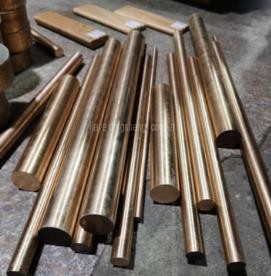
Multi-pass cold drawing:
Principle: Through a series of molds (with diameters decreasing by 0.1-0.5mm successively) and drawing, each pass controls the reduction amount (5%-15%), combined with lubricants (such as graphite emulsion) to reduce friction, ultimately achieving a diameter tolerance of ±0.01-0.05mm (precision grade), much higher than the ±0.1-0.5mm of hot-rolled rods.
Application scenarios: Electronic connectors, precision bolts, etc., products with high requirements for dimensional accuracy (such as a 5mm rod with a tolerance of ±0.02mm).
Cold drawing sizing:
Using a multi-roller cold rolling machine (such as a twelve-roll machine) to precisely roll the rod, through precise control of the rollers (roller gap accuracy ±0.005mm), the diameter deviation ≤0.01mm, and roundness (out-of-roundness) ≤0.005mm, suitable for highly demanding mating parts (such as bearing outer rings).
2. Straightening treatment: improving straightness
Rolling straightening:
Principle: The bent beryllium copper rod is passed through multiple sets of upper and lower interlaced straightening rollers (usually 5-11 sets), through repeated bending to release the internal stress, and finally achieving a straightness of ≤0.5mm/m (precision grade).
Advantages: Suitable for batch processing, high efficiency, often used for rods after cold rolling (cold processing is prone to bending).
Pressure straightening:
For rods with local bending (such as single-directional bending), apply reverse pressure at the bending point using a hydraulic press, manually adjust to a straight state, suitable for small batches or large-diameter rods (φ≥100mm), the straightness can be controlled at ≤0.3mm/m.
Hot straightening:
For severely bent rods after hot processing (such as hot-rolled rods), heat to 300-400℃ (below the recrystallization temperature) and then straighten, using the plasticity at high temperatures to reduce the straightening force and avoid rod breakage, suitable for high-zinc beryllium copper (such as H59) and other materials with higher brittleness.
3. Fixed-length cutting and chamfering: controlling length and edge quality
Fixed-length cutting:
Using a CNC sawing machine (such as a band saw, circular saw) to cut the length as required by the customer (such as 1m, 2m, 6m), the length tolerance is controlled within ±1-5mm (based on the precision grade), during cutting, coolant (such as emulsion) is used to reduce thermal deformation and burrs.
For precision parts using short rods (such as a length of 50-100mm), laser cutting is used, the cut edge is flat (verticality ≤0.01mm), without burrs, no further trimming is required.
Chamfering treatment:
Chamfering the ends of the rods (45° or 30°), removing sharp edges (to avoid scratches during handling), and facilitating subsequent assembly (such as insertion into holes), the chamfering size is usually 0.5×45°-2×45° (adjusted according to the diameter).
III. Quality inspection: Ensuring optimization results meet standards
After surface and size optimization, strict inspection is required to verify the results, common indicators and methods include:
Surface quality inspection:
Surface roughness: Measured using a roughness meter (Ra value), decorative rods need to be ≤0.2μm, structural rods ≤1.6μm.
Defect inspection: Check the surface for cracks, peeling, coating detachment, etc. using visual inspection (or magnifying glass); for important products, use fluorescent flaw detection to detect small defects.
Dimensional accuracy inspection:
Diameter: Measured using a micrometer (precision 0.001mm) at different positions of the rod (at least 3 points), ensuring the tolerance meets the requirements.
Straightness: Place the rod on a flat surface, measure the maximum deflection with a dial indicator, calculate the bending per meter.
Corrosion resistance test: Salt spray test: Place the post that has undergone passivation or coating into the salt spray chamber (5% NaCl solution, 35℃), and after 24 to 72 hours, check whether the surface has rusted or corroded.
# Tags:
-
surface and size optimization of beryllium copper rod


